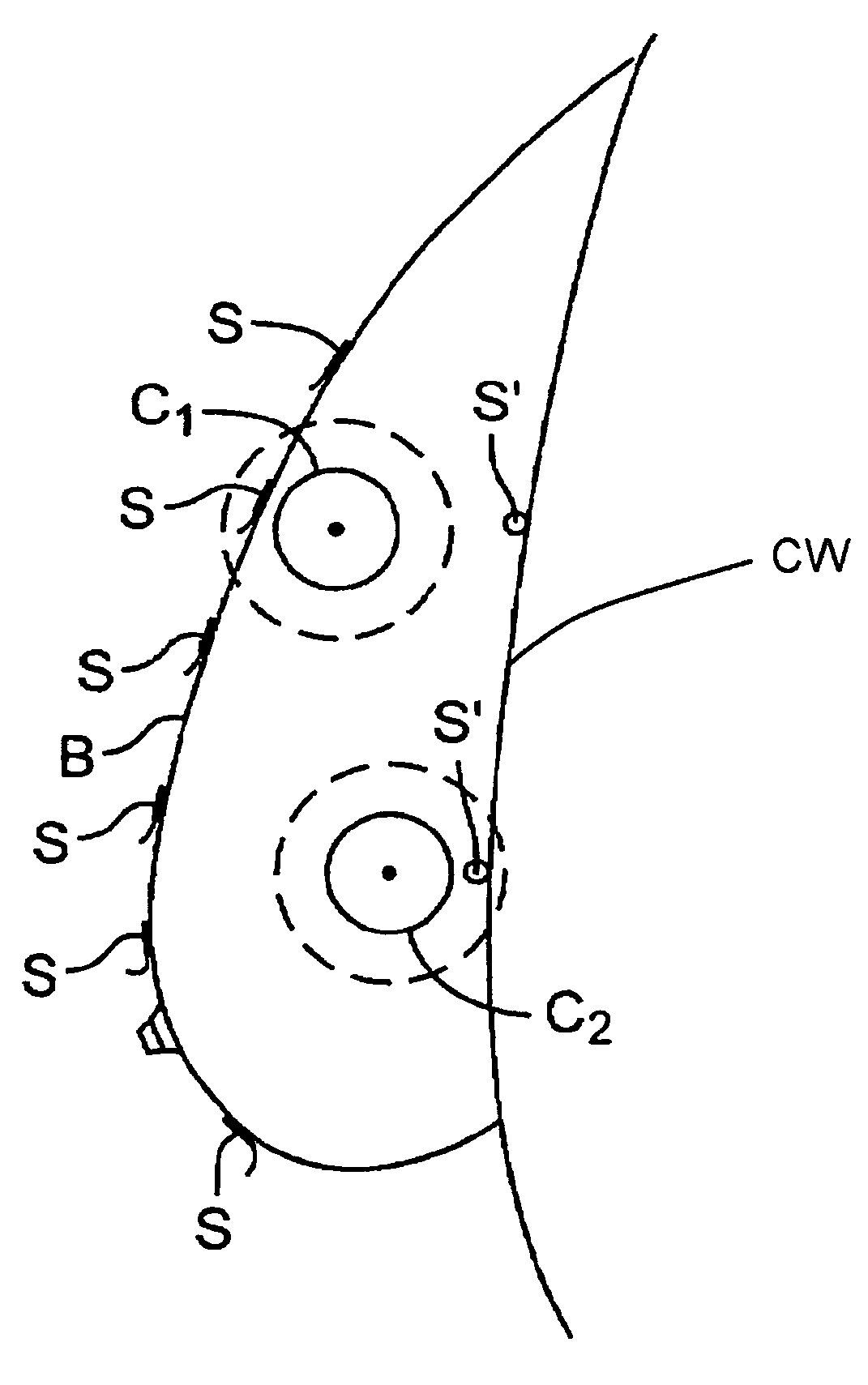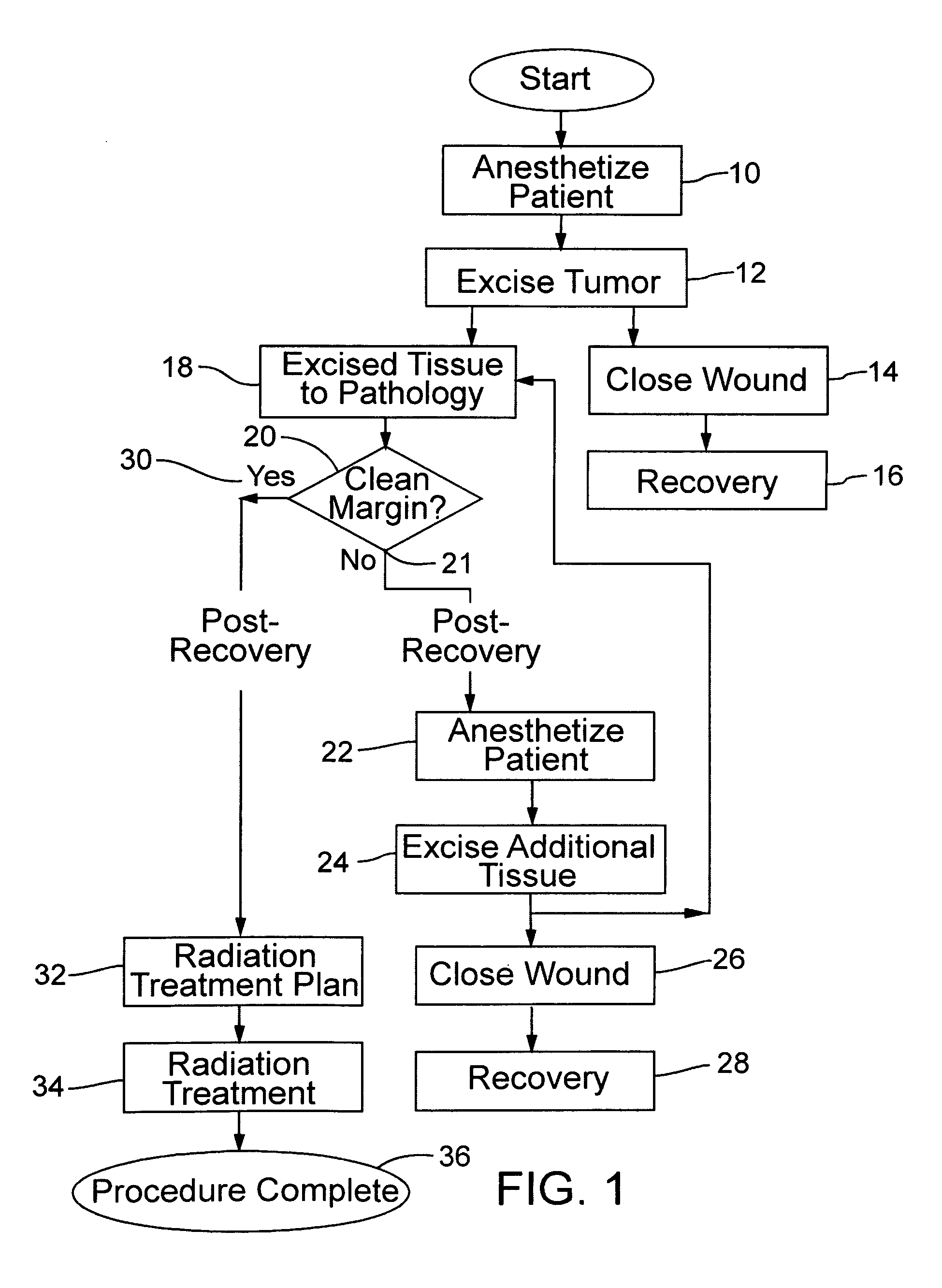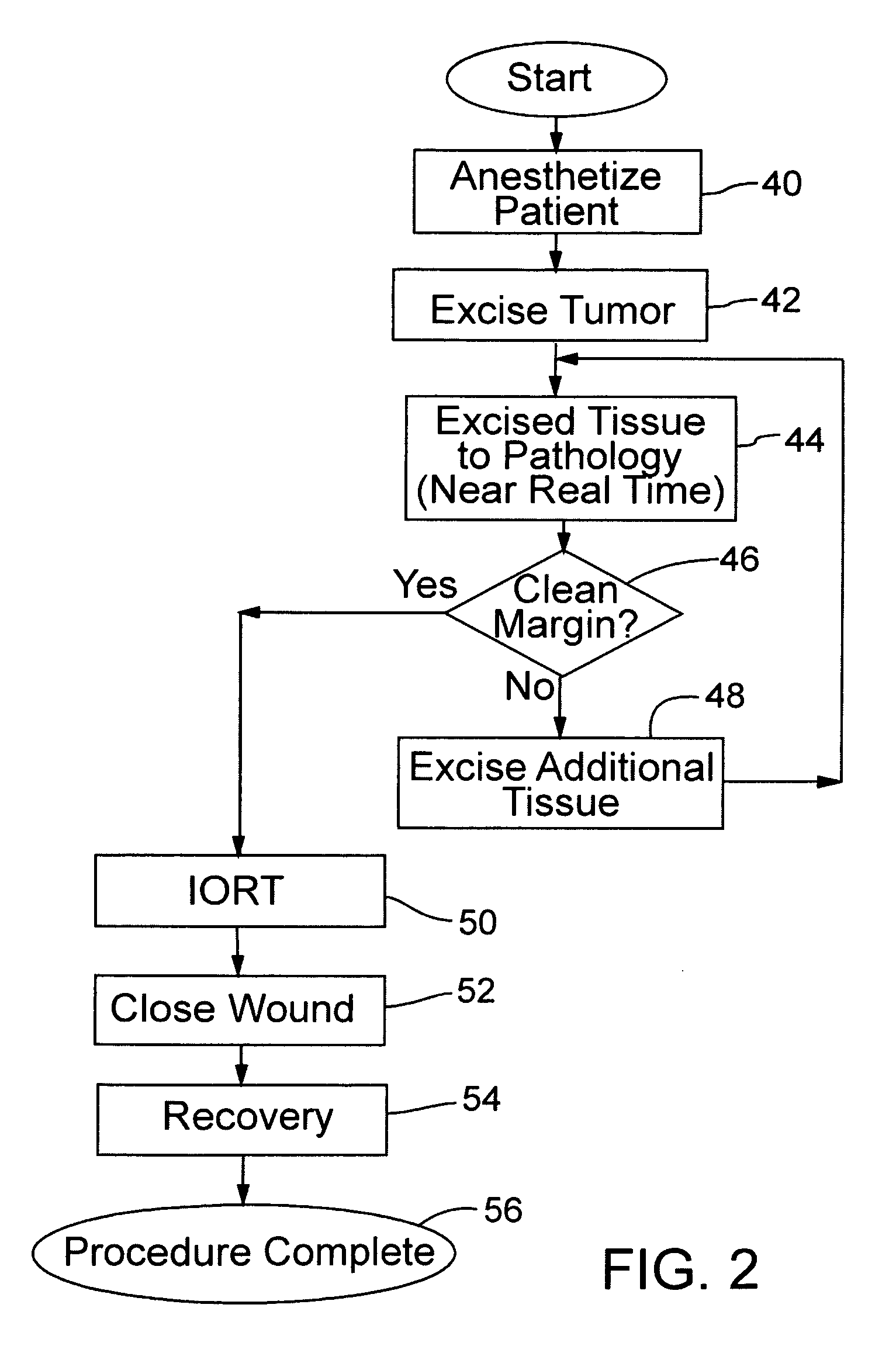Method for Adaptive Radiation Treatment of Breast Tissue Surrounding a Cancer Resection Cavity of Arbitrary Shape
a radiation treatment and breast tissue technology, applied in radiation therapy, radiation therapy, x-ray/gamma-ray/particle irradiation therapy, etc., can solve the problem that isotopes cannot be controlled in any practical sense, and achieve the effect of improving radiation treatment accuracy, less discomfort and trauma, and increasing cable length
- Summary
- Abstract
- Description
- Claims
- Application Information
AI Technical Summary
Benefits of technology
Problems solved by technology
Method used
Image
Examples
Embodiment Construction
[0039]FIG. 1 shows typical brachytherapy practice where pathology of the excised tissue is performed post-operatively, particularly after a tumor has been excised from the breast of a patient; FIG. 1 represents prior art as well as the invention, with further details set out below. The patient is anesthetized as indicated at 10, and the tumor is excised as indicated at 12 in the drawing. Following excision, the surgical wound is closed as noted at 14, and the patient recovers as shown in the block 16 and is sent home. Optionally, a place holding balloon in accordance with the teaching of co-pending provisional patent application No. 60 / 851,687 may be implanted in the resection cavity before closing, in anticipation of subsequent radiotherapy following satisfactory pathology. The specification of application No. 60 / 851,687 is included herein by reference in its entirety.
[0040]Meanwhile, the excised tissue is sent to pathology as shown at 18, and the pathology of the tissue is determi...
PUM
 Login to View More
Login to View More Abstract
Description
Claims
Application Information
 Login to View More
Login to View More - R&D
- Intellectual Property
- Life Sciences
- Materials
- Tech Scout
- Unparalleled Data Quality
- Higher Quality Content
- 60% Fewer Hallucinations
Browse by: Latest US Patents, China's latest patents, Technical Efficacy Thesaurus, Application Domain, Technology Topic, Popular Technical Reports.
© 2025 PatSnap. All rights reserved.Legal|Privacy policy|Modern Slavery Act Transparency Statement|Sitemap|About US| Contact US: help@patsnap.com



